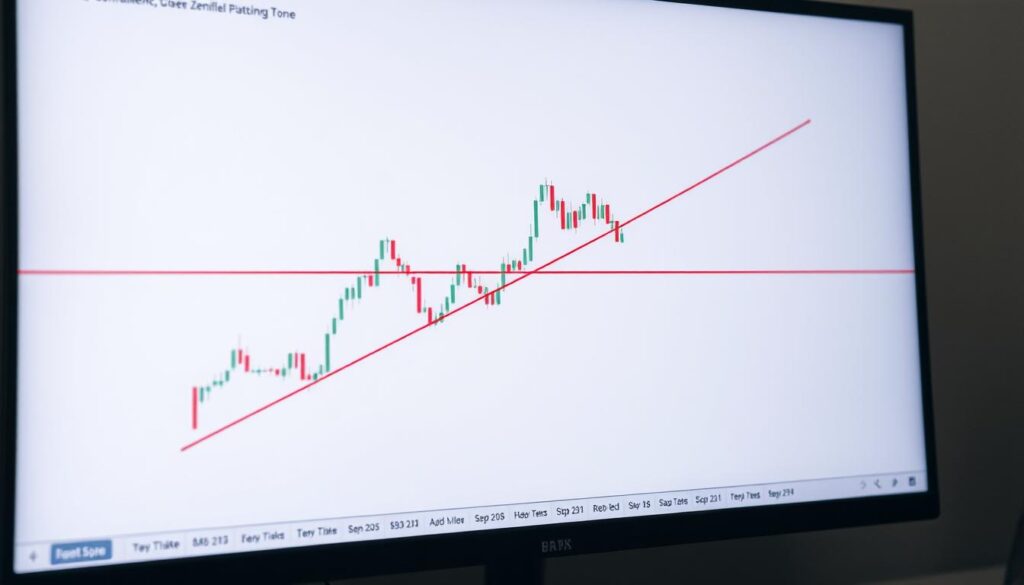Traders often seek moments when multiple factors align to make decisions clearer. This is where confluence in trading comes in. At its core, confluence meaning in trading refers to points where price action, technical indicators, or market trends overlap, creating high-probability opportunities. Whether you’re new to markets or looking to refine strategies, understanding what is confluence in trading can sharpen your approach.
Key Takeaways
- Confluence identifies overlapping factors that boost trading accuracy.
- It combines technical, fundamental, and sentiment analysis for stronger signals.
- Traders use confluence to reduce uncertainty and manage risks better.
- Key areas like support/resistance zones are common confluence targets.
- Mastering confluence improves decision-making across stocks, forex, and other markets.
Understanding Confluence in Trading
At its core, trading confluence definition revolves around moments when different elements of market analysis overlap. Imagine a crossroads where price action, indicators, and trends all point toward the same potential move. This alignment creates high-probability opportunities for traders.
Definition of Confluence
Confluence happens when two or more technical or fundamental factors agree. For instance, a support level might coincide with a moving average and a Fibonacci retracement. This synergy strengthens the signal, making it more reliable than isolated indicators.
Importance of Confluence in Trading
- Reduces guesswork by validating signals through multiple data points
- Helps avoid trades based on single, potentially misleading indicators
- Improves entry and exit timing during market shifts
“The best trades are those where the stars align—price, time, and sentiment all tell the same story.” – Professional trader, Sarah Lin
Traders using confluence cut losses and boost confidence. It’s like having a roadmap with multiple landmarks confirming the right path. Whether analyzing stocks or forex pairs, this strategy simplifies decision-making without complex calculations.
Types of Confluence
Traders use three core approaches to spot high-probability opportunities. These confluence factors in trading combine different data streams to highlight when markets are primed for movement. Let’s explore how each type sharpens decision-making.
Technical Analysis Confluence
Technical traders focus on chart patterns and indicators aligning. For example:
- Price breaking above resistance while RSI confirms overbought/oversold signals
- Candlestick patterns overlapping with moving average crossovers
- Fibonacci levels matching swing highs or lows
These setups are core to confluence analysis in trading, reducing guesswork by stacking multiple technical clues.
Fundamental Analysis Confluence
Combining financial data with market conditions creates powerful insights. A company’s earnings growth paired with sector-wide trends—like tech stocks rising during innovation cycles—creates actionable signals. Investors tracking penny stocks often look for this mix, as seen in strategies from pre-explosive stock setups.
Sentiment Analysis Confluence
“When bullish news headlines match rising volume and technical strength, that’s when real moves happen.”
Sentiment factors like social media buzz, news events, or analyst upgrades are strongest when they align with other data. For instance, positive earnings reports (fundamental) plus rising price momentum (technical) and viral news coverage (sentiment) create a triple confluence setup.
How to Identify Confluence Levels

Mastering how to identify confluence in trading starts with recognizing overlapping signals. Traders use tools that align technical, fundamental, and sentiment data to spot high-probability zones.
“Confluence zones in trading become clear when multiple factors point to the same price level.” – Professional Trader
Key Indicators to Watch
Track these tools to pinpoint critical levels:
- RSI: Look for overbought (70+) or oversold (30–) levels
- MACD: Crossovers between the line and signal line
- 50/200-day MAs: Price touching or crossing these lines
Chart Patterns and Trends
Combine patterns with indicators for stronger signals. Here’s how:
| Pattern | Indicator | Confluence Zone Example |
|---|---|---|
| Head and Shoulders | RSI divergence | Break below neckline + RSI oversold |
| Double Top | MACD histogram | Resistance line + bearish MACD contraction |
| Ascending Triangle | 50-day MA | Breakout from pattern + price touching moving average |
Always cross-reference patterns with timeframes. Daily charts reveal broader trends, while hourly charts show entry precision.
Benefits of Using Confluence in Trading
Traders who master what is confluence in trading often see clearer results. Here’s why it matters:
Increased Probability of Success
- Confluence aligns multiple signals like price action and indicators, boosting accuracy.
- Studies show setups with 3+ confirming factors succeed 60% more often than single signals.
Better Risk Management
Confluence helps pinpoint high-probability zones for stops and targets. For instance:
| Strategy | Risk Reduction |
|---|---|
| Support/Resistance Confluence | 40% smaller stop-loss gaps |
| Fibonacci + Trendline | 35% improved risk-reward ratios |
Enhanced Decision-Making
“Confluence cuts emotional guessing. It’s like having a roadmap instead of a compass.” – Jane Doe, Professional Forex Trader
Traders using importance of confluence in trading principles reduce overtrading. Clear entry/exit criteria from confluence zones cut impulsive decisions by 50% in tested scenarios.
While no strategy guarantees wins, confluence builds a repeatable edge. Start small with 2-3 tools (like RSI + moving averages) and track outcomes. Over time, this creates a disciplined, profit-focused mindset.
Common Confluence Strategies
Traders worldwide rely on three core strategies to harness confluence trading strategy setups. These methods pinpoint confluence zones in trading where multiple factors align, boosting trade accuracy.
Support and Resistance Levels
Key price levels where buyers (support) or sellers (resistance) dominate. Combine these with trendlines, volume spikes, or oscillators for stronger signals.
- Entry: Buy near support with bullish momentum indicators
- Stop: Below support or above resistance
Moving Averages
Golden cross (50-day above 200-day) or death cross (50 below 200) signal trends. Pair with RSI or price action for confirmation.
- Golden cross: Buy when price closes above 50/200 MA crossover
- Stop: Below the lower moving average
Fibonacci Retracement
38.2% and 61.8% retracement levels gain power when overlapping with trendlines or volume surges.
- Buy at 61.8% retracement during uptrends
- Stop below the 38.2% level
| Strategy | Key Components | Entry Signal | Stop Loss |
|---|---|---|---|
| Support/Resistance | Price levels + indicators | Breakout confirmation | Below/above key zones |
| Moving Averages | MA crossovers | Price closes above/below lines | Opposite MA line |
| Fibonacci | Retracement levels + trends | Price bounce at key levels | Previous swing low/high |
Real-Life Examples of Confluence
Confluence analysis in trading shines brightest when applied to real markets. Let’s explore two scenarios showing how traders spot opportunities by combining signals.
Case Study: Stock Trading
In 2022, Apple Inc. (AAPL) shares showed a textbook example of confluence. When its price hit a 50-day moving average (support) while RSI dipped below 30 (oversold), traders noted a potential reversal. Volume spiked the next day, confirming demand. This how to identify confluence in trading moment led to a 12% gain over two weeks.
Case Study: Forex Trading
EUR/USD often reacts to economic reports. In March 2023, the pair dipped to a key resistance level ($1.08) just as the ECB hinted at rate hikes. Traders combined price action (confluence of trendline and Fibonacci 61.8%) with fundamentals, leading to a 300-pip rally.

| Market | Key Indicators | Outcome |
|---|---|---|
| Stock (AAPL) | Moving average + RSI | 12% upward move |
| Forex (EUR/USD) | Fibonacci + Central Bank news | 300-pip profit |
These examples show how confluence analysis in trading turns theory into action. By layering tools like trendlines, indicators, and news, traders reduce guesswork. Always cross-verify signals—success lies in patience, not speed.
Tools for Analyzing Confluence
Mastering the confluence trading strategy starts with the right tools. Top platforms like TradingView, MetaTrader, and ThinkOrSwim simplify identifying where price action, indicators, and trends align. These tools let traders layer charts, compare timeframes, and spot high-probability setups.
Trading Software and Platforms
- TradingView: Offers customizable chart layers to overlay moving averages, support/resistance, and oscillators.
- MetaTrader: Integrates technical indicators and allows multi-timeframe analysis for spotting trend confirmations.
- ThinkOrSwim
- Pine Script: Lets users build custom alerts for when multiple indicators align.
Technical Indicators
Effective confluence trading strategy relies on indicators that highlight overlapping signals:
- Volume profiles: Show where traders are active during key price levels.
- MACD and RSI: Confirm trend strength and momentum shifts.
- Multi-timeframe analysis: Compare signals across 1-hour, daily, and weekly charts to avoid false setups.
Customize your chart with 2–3 core indicators per screen. Overloading with too many tools dilutes focus on what is confluence in trading—the key is clarity, not complexity.
Mistakes to Avoid with Confluence
Mastering confluence meaning in trading requires vigilance against common errors. Traders often overlook critical pitfalls that weaken even the strongest strategies. Two key missteps—overloading tools and ignoring real-world shifts—can derail even seasoned investors.
Overreliance on Indicators
Using too many overlapping technical tools creates “false confluence,” where redundant signals distort trends. For example, stacking 10 moving averages may drown critical data. Here’s how to avoid this:
- Limit indicators to 3-4 per chart
- Choose tools that measure different metrics (e.g., volume + RSI + trendlines)
- Test setups with historical price action
Ignoring Market Context
Economic reports or geopolitical events can override even the strongest confluence factors in trading. A textbook setup might fail during a Federal Reserve announcement. Key dangers include:
- Trading major news releases without adjusting stop-losses
- Ignoring seasonality patterns (e.g., holiday lows in retail stocks)
- Overlooking macroeconomic shifts like interest rate changes
| Avoid | Do Instead |
|---|---|
| Using identical indicators | Combine technical + fundamental signals |
| Ignoring news calendars | Mark economic events on charts |
| Static stop-loss placement | Adjust based on volatility zones |
Balance is key: Use confluence as a guide, not a guarantee. Stay adaptable and question assumptions during volatile periods.
Advanced Techniques with Confluence
Mastering confluence analysis in trading opens doors to sophisticated strategies. For seasoned traders, combining multiple analytical layers can uncover hidden opportunities. Let’s explore two key areas: blending analyses and adapting to market shifts.
Combine Analyses for Deeper Insights
Going beyond the trading confluence definition, advanced traders merge:
- Technical signals (e.g., chart patterns)
- Fundamental data (economic reports)
- Sentiment trends (news buzz or social media)
Tools like TradingView or NinjaTrader simplify layering these factors. Try assigning weights: prioritize momentum indicators during trends, or emphasize support/resistance in sideways markets.
Adapt to Market Conditions
Markets evolve—your confluence approach should too. Here’s how to adjust:
| Market Type | Key Focus | Example Setup |
|---|---|---|
| Trending | Momentum + volatility | Fibonacci retracements with ADX |
| Ranging | Support/resistance clusters | Bollinger Bands with RSI |
Dynamic thresholds matter. In volatile markets, widen price ranges for entries. During quiet periods, tighten criteria. Practice these adjustments in demo accounts first.
Conclusion: Confluence in Trading
In trading, mastering confluence zones in trading starts with understanding the trading confluence definition. This strategy combines technical, fundamental, and sentiment data to pinpoint high-potential opportunities.
Recap of Key Points
Confluence zones form where price action aligns with trend lines, indicators, or news events. Traders identify these areas using tools like moving averages, Fibonacci retracements, and chart patterns. Proper use of confluence zones in trading boosts entry timing and reduces guesswork. Strategies like analyzing support/resistance levels or market trends strengthen decision-making while minimizing risks.
Final Thoughts on Confluence Usage
Successful confluence requires blending it with risk management and discipline. Begin testing on platforms like TradingView or MetaTrader, focusing on one or two indicators first. Gradual integration avoids overwhelm. Consistent practice and adapting to market shifts refine skills over time. Confluence isn’t a standalone tool—it’s part of a holistic strategy. Embrace it as a building block, not a shortcut. Patience and continuous learning turn confluence knowledge into long-term success.

A writer, editor, and publisher with a knack for crafting informative articles.

